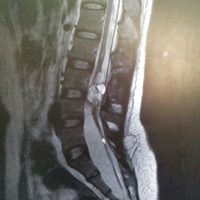Can Individuals with Spinal Disorders Qualify for SSD?

Spinal disorders can have a profound impact on an individual’s life, limiting their ability to work, move freely, and live without pain. If you’ve been diagnosed with a spinal disorder, you may wonder if you can receive Social Security disability benefits. You have paid into the Social Security system for the duration of your career, and if you’re disabled, you deserve to access those benefits.
If you think you may be eligible for SSDI benefits, we’re here to help. Call The Dansby Law Firm at 334-834-7001 to schedule a time to talk with our team.
How a Spinal Disorder Can Keep You from Working
Spinal disorders take a toll on your entire body. As your injuries wear away at your discs, vertebrae, and other components of your spinal cord, you may experience increasingly severe pain levels. This pain and the stiffness caused by your disorder may limit your mobility in your arms, legs, hips, and back. If your disorder progresses, you could lose control of your bowel or bladder, lose your ability to drive, and require assistance with more and more tasks.
Knowing this, it’s not surprising that many spinal disorders can limit your ability to work or leave you completely unable to work.
Spinal Disorders in the Listing of Impairments
There are many types of spinal disorders recognized by doctors. Some have special listings in the SSA Listing of Impairments, better known as the Blue Book. These listings include:
- Facet arthritis
- Degenerative disc disease
- Spinal arachnoiditis
- Spinal stenosis
- Osteoarthritis
- Herniated nucleus pulposus
- Vertebra fracture
Some of these diagnoses have their own listings in the Blue Book. Section 1.16 lays out the requirements for lumbar spinal stenosis resulting in a compromise of the cauda equina. You must meet all four requirements to receive benefits for spinal stenosis:
- Symptoms of neurological compromise, such as distribution of pain in one or both lower extremities or distribution of sensory loss in one or both lower extremities
- Neurological signs documented via physical examination or diagnostic testing, resulting in muscle weakness, sensory changes, and decreased deep tendon reflexes in both legs
- Imaging results showing lumbar spinal stenosis
- Physical limitations related to your impairment resulting in a medical need for a mobility device or an inability to use one upper extremity to engage in fine and gross motor activities
What to Do If Your Disorder is Not Listed
You can still qualify for SSDI with a spinal disorder if your disorder is severe enough to keep you from working. Even if your specific disorder isn’t listed, the Blue Book does allow for benefits under a general listing for spinal cord disorders.
Consider what is included in the Blue Book’s listing for spinal cord disorders, found in section 11.08. You must meet the requirements of sections A, B, or C. Section A requires that you have a complete loss of function for three consecutive months following the diagnosis of your disorder. Section B requires that you have disorganization of motor function in two extremities.
This results in an extreme limitation in your ability to balance while standing or walking, stand from a seated position, or use your upper extremities for a period of at least three months. Section C requires that you have marked limitations in your physical abilities and at least one area of mental functioning.
The other way you can get benefits is to prove that your residual functional ability is so limited that you are unable to work in your most recent job or any other job. This process involves proving your disability through extensive documentation and allowing the SSA to review your limitations.
Applying for Benefits
Whether you are applying under a specific Blue Book listing or by demonstrating a limited residual functional ability, it’s important to send in the strongest application possible. Plan on sending in extensive medical documentation from all of the physicians you see for your diagnosis, records of missed time from work, and evidence of other ways that your disability has limited your life. Working closely with a disability attorney can help you strengthen your application and reduce your chance of a denial.
Get the Help You Need with The Dansby Law Firm
At The Dansby Law Firm, we are strongly committed to helping disabled workers get the benefits they need. Let us help you pursue benefits for your spinal disorder. Call us at 334-834-7001 or get in touch online to get started.


